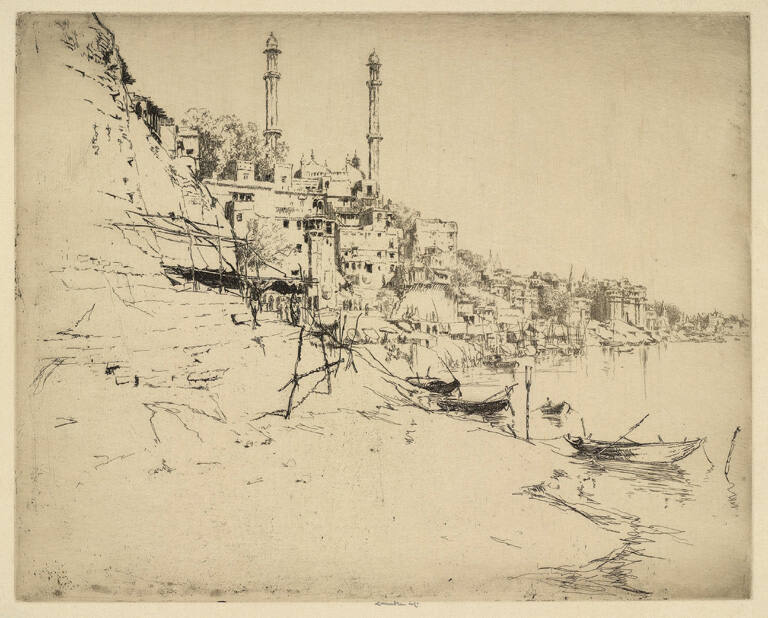
Object Details
Artist
Ernest Stephen Lumsden
Date
1912
Medium
Etching
Dimensions
7 13/16 x 9 7/8 inches (19.8 x 25.1 cm)
Credit Line
Bequest of William P. Chapman, Jr., Class of 1895
Object
Number
56.296
In this spartan view of Benares (now known as Varanasi, or Kashi), the left register is marked by sa(…)
In this spartan view of Benares (now known as Varanasi, or Kashi), the left register is marked by sand and the poles fixed into it, with anchored boats on the sacred Ganga, while the right is densely structured at different levels extending into the distance. The river and ghat which is usually thronged with Hindu devotees immersed in a purifying ritual, is empty. Here, the Dharhara mosque built by the controversial Mughal Emperor Aurangzeb in the seventeenth century is rendered in sharp relief with its minarets extending prominently to the top. The peaceful, romanticized view here belies what would normally be a landscape teeming with human activity.
The Dharhara mosque was built over the Hindu temple Bindu Madhav, just as Aurangzeb also erected the Gyanvapi Idgah (Well of Knowledge Mosque) over an important Vishweshwar/Shiva temple. Thus, the built environment of the medieval-era city reflects the political designs of different Mughal rulers.
Recent controversies generated by the right-wing ruling party have attempted to rewrite history by reclaiming these former Hindu sites, and Varanasi has become a contentious political constituency during elections. The architectural contours which are significant to different Hindu, Jain, and Muslim sects continue to be decided by political agendas, creating grave religious tension and strife, and placing the Muslim residents at great peril for past acts.
—Ayesha Matthan, PhD candidate












